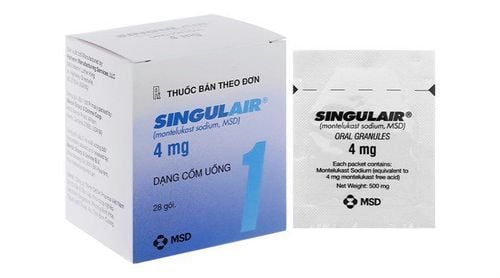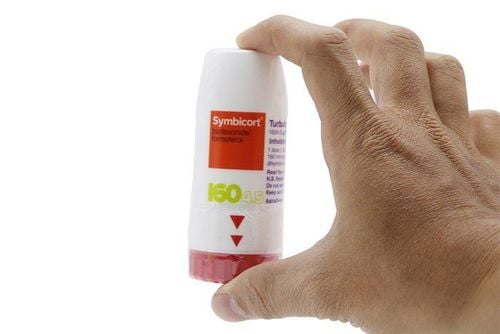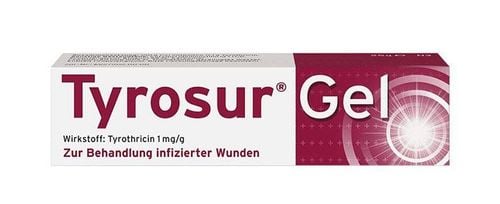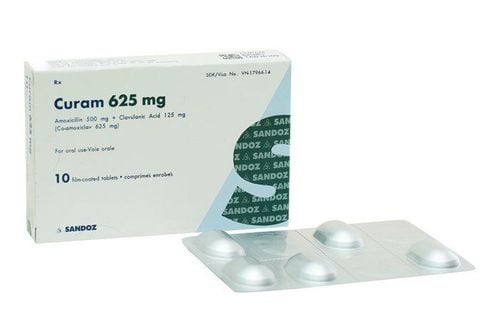This is an automatically translated article.
Singulair contains the active ingredient Montelu-kast sodium, which is indicated for the treatment and prevention of chronic bronchial asthma, including prevention of nocturnal and daytime asthma attacks, treatment of asthma in aspirin-sensitive patients, and prevention of asthma. exercise-induced bronchospasm. Let's find out the notes when using Singulair through the article below.1. Uses of Singulair
Singulair contains the active ingredient Montelukast, which is prepared in the strengths of Singulair 5mg, 4mg and 10mg. The drug is indicated in the following cases:Adults and children from 6 months of age and older for the treatment and prevention of chronic asthma, including prevention of night and day asthma; Treatment of bronchial asthma in aspirin-sensitive patients, prevention of exercise-induced bronchospasm; Relieving daytime and nighttime symptoms of allergic rhinitis (seasonal allergic rhinitis in adults and children 2 years of age and older), perennial allergic rhinitis in adults and children 6 years of age and older months and older.
2. Dosage of Singulair
Singulair tab 10mg is to be taken orally with or without food. Singulair medicine in the prevention and treatment of bronchial asthma should be used in the evening, for patients with allergic rhinitis, the duration of use depends on the needs of the patient. The recommended dose is 1 time per day, specifically as follows:
Adults and adolescents 15 years of age and older: Take 1 10mg tablet daily; Children 6-14 years old: Take 1 5mg chewable tablet daily; Children from 2 to 5 years old: Take 1 chewable tablet 4mg or 1 pack of nuggets 4mg per day; Children from 6 months to 5 years old: Take 1 packet of granules 4mg per day. General recommendations:
The effectiveness of Singulair treatment depends on the asthma test parameters achieved during the day. Patients should continue to take Singulair, even when asthma is under control as well as during severe asthma attacks. than; No dose adjustment is required in pediatric patients in each age group, in the elderly, in patients with mild to moderate hepatic impairment, in patients with renal impairment or for each sex; Singulair treatment in relation to other asthma medications: Singulair can be used in combination in patients being treated with other asthma regimens; Reduce the dose of combination drugs: Singulair may be added to the regimen in patients not adequately controlled with bronchodilators. Usually after the first dose of combination (after evidence of clinical response) the dose of the combination bronchodilator can be reduced; Inhaled Corticosteroids: Combination therapy with Singulair offers significant therapeutic benefit in patients receiving inhaled corticosteroids. The dose should be reduced as the patient tolerates Singulair under the supervision of the treating physician; All dosage recommendations above are for reference only. The actual clinical dose of Singulair depends on each specific patient and as directed by the treating doctor, the patient absolutely should not use the drug without the prescription of a medical professional.
3. Singulair drug side effects
Singulair 5mg, 4mg or 10mg medicine can cause some side effects as follows:
Common: Systemic side effects such as headache, abdominal pain (patients older than 15 years), thirst (patients from 2 years old) - 5 years old), agitation, diarrhea, asthma, rash and dermatitis (patients from 6 months to 2 years).
Uncommon:
Parasitic and bacterial infections such as upper respiratory tract infections; Lymphatic system and blood disorders: Increased bleeding tendency; Immune system disorders: Hypersensitivity reactions such as anaphylaxis, rarely eosinophilic infiltration of the liver; Nervous system disorders: Drowsiness, dizziness, paresthesia/hypoesthesia, rarely convulsions; Heart disorders: Palpitations; Chest, respiratory and mediastinal disorders: Nosebleeds; Gastrointestinal disorders: Anorexia, diarrhea, vomiting, nausea; Hepatobiliary disorders: Increased AST, ALT; Skin and subcutaneous tissue disorders: Bruising, angioedema, pruritus, rash, erythema nodosum, urticaria; Musculoskeletal and Connective Tissue Disorders: Myalgia, arthralgia including cramps; Systemic disorders and local administration: Fatigue, asthenia, fever, edema. Rare: Hepatobiliary disorders such as hepatitis (hepatitis, cholestatic hepatitis, multicomponent liver injury).
In case of experiencing side effects when using, the patient should stop taking Singulair and notify the treating doctor for timely treatment.
4. Notes when using Singulair
4.1. Contraindications Contraindicated for use in patients with hypersensitivity to any component of Singulair.
4.2. Precautions There are no studies demonstrating the efficacy of Singulair in the treatment of acute asthma attacks. Therefore, do not use oral medications in the treatment of acute asthma attacks. Patients should be instructed to use appropriate dosage forms. In some cases it is necessary to reduce the dose of corticosteroids under the guidance of the treating physician and not to abruptly replace the dose of oral corticosteroids and inhaled Singulair.
Use caution and closely monitor the patient's clinical symptoms when reducing the dose of oral corticosteroids in patients treated with Singulair. There have been reports of neuropsychiatric side effects in patients treated with Singulair.
Singulair drug was studied in pediatric patients 6 months - 14 years old, and the safety and specific efficacy of the drug in pediatric patients under 6 months of age are unknown. Studies also show that the drug does not affect growth rates in children.
Ability to drive - operate machines: Singulair does not affect the patient's ability to drive and operate machines.
Pregnant women, lactating women: There are no studies on the safety of Singulair when used in pregnant and lactating women. Therefore, caution should be exercised when using the drug in these subjects.
5. Drug interactions
Drug interactions occur that reduce drug effects and increase the risk of toxicity and side effects. Simultaneous administration of Singulair and phenobarbital reduced the area under the curve of montelukast by approximately 40%. Therefore, it is necessary to limit the use of two drugs together.
Hopefully, the above sharing will help us better understand how to use Singulair as well as how to ensure safety and limit side effects when used.
Please dial HOTLINE for more information or register for an appointment HERE. Download MyVinmec app to make appointments faster and to manage your bookings easily.













